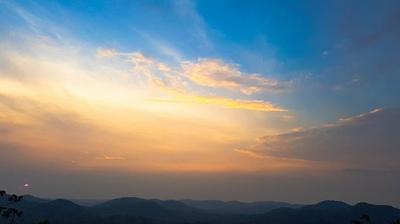Tom Land on being inspired by the Belize Tropical Ecology Field Course

Belize; a small Central American country, sandwiched between Guatemala and the Caribbean is the locale of one of the most prosperous Mayan civilisations to ever exist and, more relevantly, the location of one of the University’s most inspirational and thought-provoking modules. The Tropical Ecology Field Course.
We were a group of thirteen students starting our journey in the smouldering ashes of the savannah plains beneath the Mayan mountains. This was a place in which we got acquainted with the wildlife and culture before plunging into the depths of a rainforest. Here we learnt about the seasonal cycles of the ecosystems; the floods of the wet season and the burnings in the dry. We learned to identify the countless species that made the plains their home, while smoke billowed around us. These were from the vultures lazily sweeping overhead (Black and Turkey vultures), to Iguanas, Armadillos and the Orependola (affectionately nicknamed by the group as the “Microwave bird” after the sound of its unique call).

From the savannah, we travelled to the interior of Belize, looking out at one of the most forested countries in Central America. The dusty (and often makeshift) roads led us into the most pristine of nature reserves; the Chiquibul Forest. We were housed at the research station Las Cuevas (The Caves) right in the middle of the forest, and apart from the rangers at the station, there was not a soul for kilometres.

Immediately thrown into the thick of fieldwork we started our day at 6:00am with a bird-walk attempting to locate one of the rarest birds in Belize – the Scarlet Macaw (naturally it was only chance that I should see five of them in the same tree at the end of the trip). From there we learned how to survey trees, arthropods and animals in a dense forest, using high-tech camera traps to plasticine caterpillars. The day normally finished with a spot of “Tarantula Tickling” (for those wondering, this is the harmless process of pretending to be food to tempt a tarantula out of their nest hole. I don’t recommend this to anyone unless you have an undergraduate keen/stupid enough to give it a go).

Once the skills were taught we were given four days to come up with a question a collect data for our own project. My group decided to get up close and personal with the inhabitants of the forest floor to watch one of the most voracious and numerous animals in the forest – leaf cutter ants. We learned the hard way to never get between a colony and its leaves.
Aside from work there was plenty of time to relax. One afternoon we walked to one of the most beautiful, pristine and isolated rivers I have ever seen. Naturally we ruined the view as we dived in for a swim.

A few days later, while in a hammock at our final location of Pook’s Hill, swinging in the jungle breeze and filling in my species lists by the light of oil lamp, I had decided I had fallen in love with the trip and the country. I know no other course that allows you to experience the first-hand adrenaline of hearing howler monkeys in the trees above you, then running through the undergrowth to get a glimpse of them in the canopy. No other course allows you to sit in the Jungle at night atop the ruins of a Mayan causeway, headlamps off, to just listen to the forest. Countless times I tried to pick out and identify noises in the dark, before getting distracted by the fireflies flickering ghost-like above the Mayan temples deep in the forest, with the Milky Way hanging in all its detail above my head.

The Tropical Ecology Field course showed me what fieldwork can be like; the ups, the downs, the successes and failures of an experiment – but most importantly, it showed me the view.
The Belize Tropical Ecology Field Course is a third year optional module jointly run by the School of Biological Sciences and the School of Geography and Environmental Sciences, at the University of Southampton. For more details contact the module coordinators: Dr Jake Snaddon (SoGES) and Dr Becky Morris (SoBS).
Thomas Land is one of the students who attended the 2019 field course. He graduated in July 2019 with a 1st class honours degree in Zoology, and is now studying on the MRes in Evolution: From the Galapagos to the 21st Century, in the School of Biological Sciences.